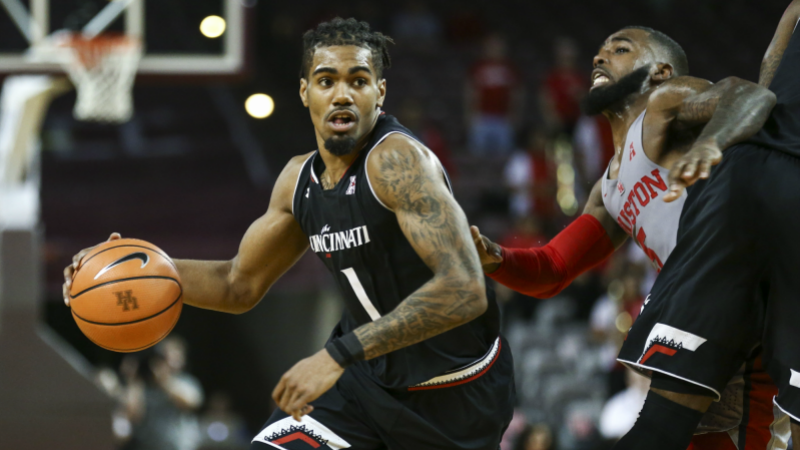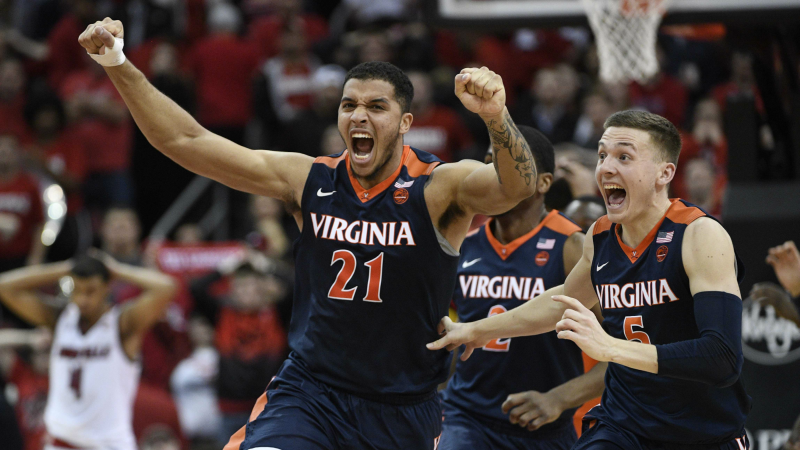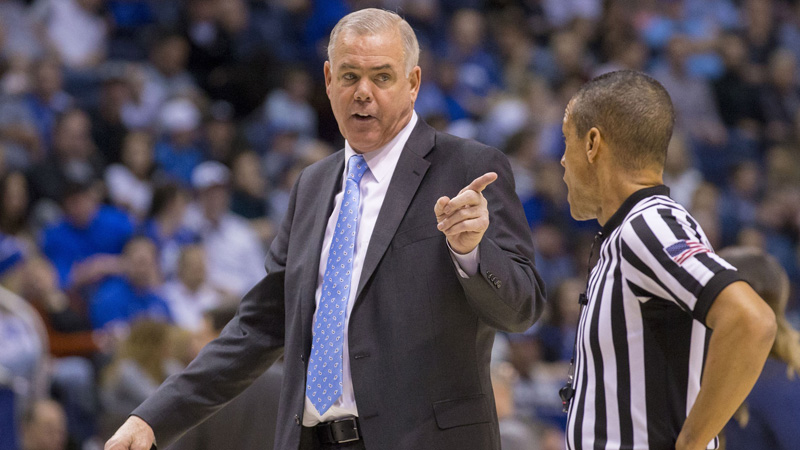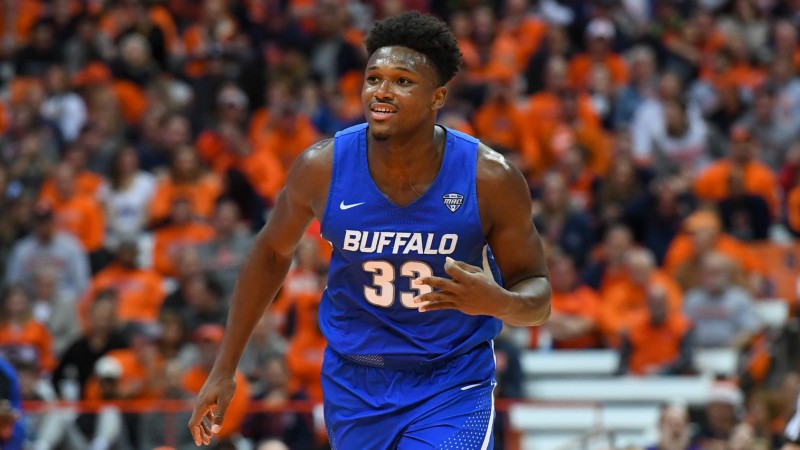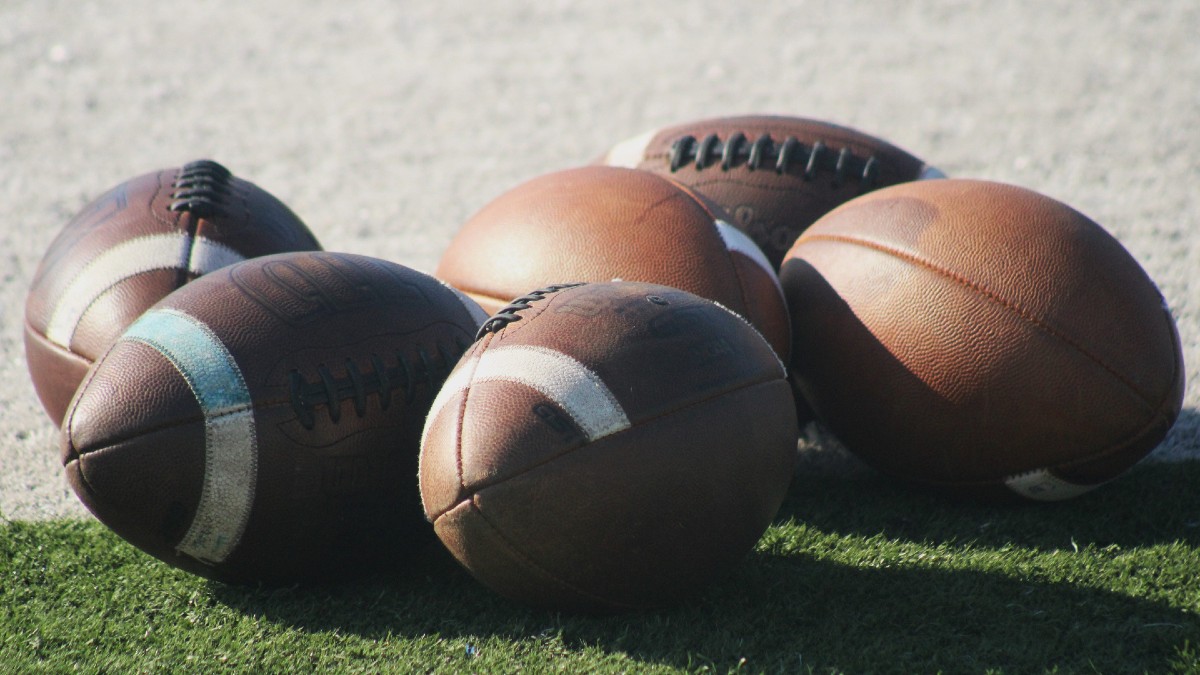Sign up for The Action Network’s daily newsletter to have the best sports betting insight and analysis delivered to your inbox.
Because of excellent college basketball stats sites like Ken Pom, the college basketball betting market seems like it's incredibly efficient. Ken Pom, for example, has a metric called Adjusted Efficiency Margin (AdjEm), which is the difference between a team's offensive and defensive efficiency. And it's on a betting scale: Subtract one team's AdjEm from another's, and that's what you should expect the margin of victory to be. I pulled a couple random games from Saturday night; here are their spreads and predicted margin of victory from Ken Pom. It's pretty close:
The Four Factors
The fact that Ken Pom's predicted margin of victory and the betting market are so closely aligned is very interesting given what goes into the AdjEm metric. Again, it's just offensive efficiency minus defensive efficiency, and then you can adjust the game for pace of play and projected number of possessions. That means that there are a ton of metrics not factored into the spread — the most famous of them being the Four Factors. Dean Oliver, one of the pioneers of basketball analytics, first debuted the Four Factors in his book Basketball on Paper. These four metrics have shown to be incredibly important to team success:
- Shooting: eFG%
- Turnover rate
- Rebounding (O vs. D)
- Free-throw rate
Oliver has discussed the Four Factors extensively over the years and said this in a 2004 blog post:
First of all, you need four of them. You can't really describe winning in full without at least four distinct factors. They are four different skills and they are pretty much independent of each other.
Offensive and defensive efficiency — points scored and allowed per 100 possessions — are important, and they likely capture some of how good a team is at offensive rebounding, getting to the free throw line, and so on. But they likely don't capture everything, and they certainly don't highlight how well a team matches up versus another team in specific areas. For example, Duke ranks first in the nation in offensive rebound rate. If they faced Kansas, which ranks 289th in defensive rebound rate, wouldn't we expect the Blue Devils to have an advantage? Of course we would! And that advantage may not be reflected in a line that solely looks at Adjusted Efficiency Margin.
To highlight this discrepancy, I took each team's Four Factor numbers on both offense and defense, put them on a 1-100 percentile score, and then used the weighting adjustment Oliver suggested. He said the Four Factors aren't equal, and he'd weight them in terms of importance this way:
- Shooting (eFG%): 40%
- Turnover rate: 25%
- Rebounding: 20%
- Free throw rate: 15%
That metric, which ranks the matchups based on the Four Factors, can then be compared to a matchup ranking based on Ken Pom's Adjusted Efficiency Margin. You might think they'd be close, but that doesn't seem to be the case. Here are the top-10 teams in the nation (per Ken Pom) and the rankings of the top-25 squads they'd most want to face based on Ken Pom and Four Factors (1 = best matchup; 25 = worst matchup):
Let's look at Virginia, the best team in the nation per Ken Pom, as an example. The red line graph going up is the order of teams in the top-25 they'd most want to face based on AdjEm. The green bars are the matchup rankings based on Four Factors. Although Florida, among top-25 teams, should be the third-easiest matchup for Virginia according to AdjEm, the Gators rank as the 14th-easiest matchup per Four Factors data. Florida's weakness on the defense glass isn't threatened by Virginia, which ranks 219th on the offensive glass. Virginia excels at turning teams over on defense; Florida is one of the best teams at protecting the ball, ranking fourth in offensive turnover rate. You get the point: Four Factors data suggests Florida is perhaps a tougher matchup for Virginia than something solely based on offensive and defensive efficiency. And that means there could be value in betting Florida if these two teams played.
One thing that surprised me a bit, however, is that, if you click through the graph above to the other teams, you'll notice that the matchup rankings don't really change. They do slightly here and there for extreme cases, but, overall, it seems that there are just teams that are underrated and overrated based on the Four Factors. So who are those teams that could fit both descriptions come tourney time? Glad you asked…
Underrated Teams
Cincinnati
Four Factors Top-25 Ranking: 1
The strongest example is Cincinnati, which ranks as the worst matchup for any team in the nation based on Four Factors. The Bearcats are "only" sixth with a +27.0 AdjEm, but their Four Factors data is much stronger. They rank second in eFG% allowed, eighth in defensive turnover rate, and third in offensive rebound rate. It's not very common at all to be so dominant in three of the eight marks (four offensive factors + four defensive), which suggests they could be an underrated matchup — or at least a bit tougher of a matchup than the betting market thinks. One could make the argument that Cincinnati's Four Factors data is inflated because they play in the American Athletic Conference, but their Adjusted Defensive Efficiency, which accounts for strength of schedule, is strongly second in the nation behind Virginia's historically-great unit.
Florida
Four Factors Top-25 Ranking: 12
The Gators boast a top-20 defense, but their offense sits only 44th in the nation, mostly thanks to poor shooting: They rank 184th with a mediocre 50.7 percent effective field goal mark. That said, they're elite in one specific Four Factor category that could be especially important later in March: Florida ranks fourth in offensive turnover rate, coughing it up on only 14.2 percent of its possessions. Senior guard Chris Chiozza is especially great in this regard, ranking top-10 in the nation with a superb 3.4 assist to turnover ratio. A top-20 defense and an offense that protects the ball is a recipe for success against any opponent.
Wichita State
Four Factors Top-25 Ranking: 8
The Shockers clean up the glass on both sides of the ball, ranking 11th in the nation in offensive rebound rate and ninth in defensive rebound rate. Further, they're top-25 in effective field goal percentage, which, according to Oliver, is the most important Four Factor. They're above-average in almost all eight, actually, with the exception being defensive turnover rate. That admittedly is a problem and could be symptomatic of a lack of athleticism on defense; they rank 103rd on the year in defensive efficiency. Still, their strengths are very strong, and being able to control the glass and limit opponents to just one shot is a good way to stay in games come the tournament.
Texas Tech
Four Factors Top-25 Ranking: 4
One more quick one: The Red Raiders could surprise with their defense. They rank third in defensive efficiency, 14th in eFG% allowed, and 10th in defensive turnover rate. They have a very similar Four Factors profile to an underrated team last year that went to the Final Four: South Carolina.
Overrated Teams
North Carolina
Four Factors Top-25 Ranking: 20
It saddens me to say this, but my Tar Heels seem to be quite overrated when you compare how they fare in the Four Factors versus their Adjusted Efficiency Margin, the latter of which ranks eighth in the nation. Carolina does have elite strengths, notably in offensive rebounding; it ranks third in that regard. But the Heels' weaknesses are profound, especially in offensive foul rate (298th) and defensive turnover rate (304th). They can create second opportunities, sure, but that's a volatile way to survive. They struggle shooting the ball and don't get to the line for efficient, easy offense. Further, they don't turn teams over to get into transition, where they're deadly, and they really struggle to defend the 3-point line. Catch a team on a wrong day and their March could end earlier than expected.
Kansas
Four Factors Top-25 Ranking: 23
It probably saddens fellow Action Network editor Scott T. Miller to read this, but his Jayhawks seem to be overrated, too. They are ninth in shooting, posting an excellent 58.0 percent effective field goal rate, and that's important. But their true-shooting marks — the metric that incorporates foul shooting — is less impressive, as they don't really ever get to the line, ranking 331rd in that regard. On defense, they rank 292nd in defensive rebounding, which is especially problematic given that the nation's best teams are perhaps historically great offensive rebounding teams this year. These teams rank in the top 15 in this season: Duke, Cincinnati, UNC, West Virginia, Michigan St., Kentucky, Houston, and TCU. The chances of Kansas facing one of those teams en route to a title seems high.
Villanova
Four Factors Top-25 Ranking: 18
It's a weird year: Another top blue-blood is seemingly a bit overrated according to Four Factors. Like Kansas, Villanova is an elite shooting team, ranking first in offensive efficiency and second in effective field goal percentage. That said, the Wildcats rank 200th in offensive rebounding rate and 288th in turnover rate. They won't get a ton of second chances or freebies, so any cold shooting night makes them more susceptible than you might expect a top team to be.
Potential Edges With Other Metrics
One last note: The Four Factors aren't the only metrics that can identify mismatches. For example, this is what I wrote a couple weeks ago when Villanova faced Xavier:
Both squads rank in the top-five in Adjusted Offensive Efficiency, but on defense, Xavier simply doesn’t match up well against Villanova. Nova makes 3s at the 19th-highest percentage nationally, while Xavier ranks 296th in 3-point percentage defense. (As mentioned above, Nova has struggled from deep of late: 17-of-71 (23.9%) over its past three games.) Nova ranks 12th in transition; Xavier ranks 287th in defending transition opportunities. Nova typically has an upper hand by not turning the ball over, which should be the case today against a Xavier team that ranks 322nd in turning opponents over. The talented Musketeers get their Big East rival at home this time, but Nova statistically matches up against them as well as any team in the country.
Four Factors analysis can be a step in finding edges in the betting market, but there's definitely places to dig deeper. I would highly suggest following along with our daily content, as we do our best to spot those edges for you, but, hey, I'm biased.
Photo credit Troy Taormina-USA TODAY Sports


